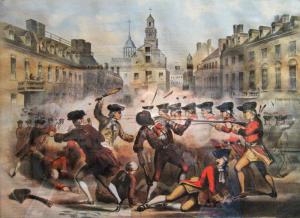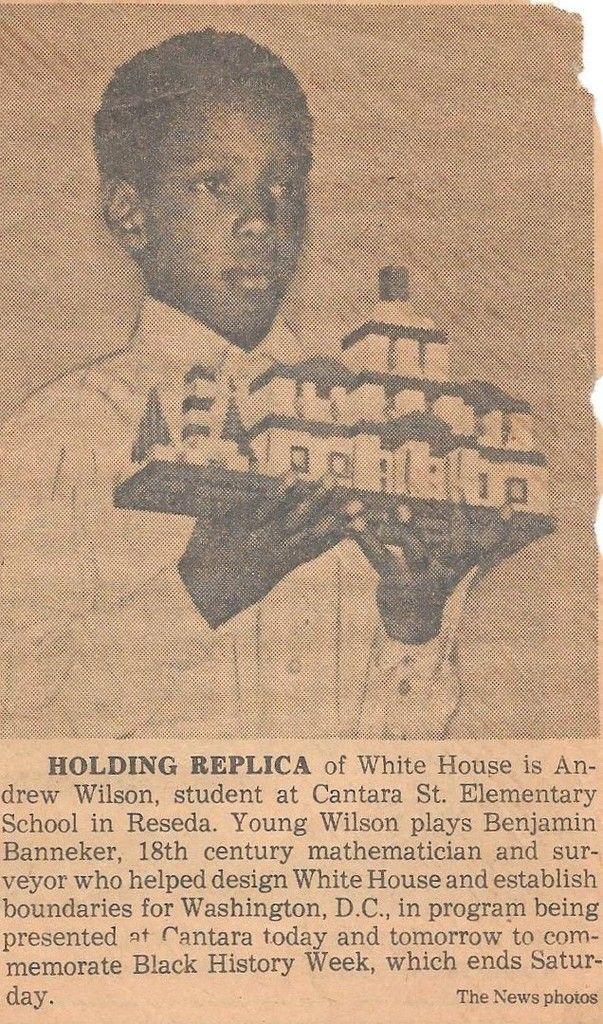The Black Dude Dies First by Sis Cat Non-Fiction Writing Contest contest entry |
 In 1976, I ran home from school in the San Fernando Valley and told my mother, “Mom, guess what? I get to play the part of the patriot Crispus Attucks in the school’s play for the Bicentennial!”
In 1976, I ran home from school in the San Fernando Valley and told my mother, “Mom, guess what? I get to play the part of the patriot Crispus Attucks in the school’s play for the Bicentennial!”Her arms crossed, my mother tapped her foot as she glared. “Who gave you that role?” I puffed my chest. My body jerked like a shaken soda can about to explode. “My teacher, Mrs. Gilbert. She gave me the best part. I get to go on stage first and I have the best lines. Did you know that Crispus Attucks was the first man killed in the American Revolution?” “Yes, I know.” “And did you know that he died at the Boston Massacre on March 5, 1770?” “Yes, I know that, too.” “He was also black.” Only eleven years old and among a handful of blacks who attended Cantara Street Elementary, I did not realize at the time that when I accepted the role of Crispus Attucks in the school’s play for the Bicentennial, I had accepted a stereotype seen in our horror movies and played on our streets—the black dude dies first. I had also stepped into my mother’s worst nightmare—that her black son would die an early death. I sensed that she felt my white teacher had bamboozled me into playing the role of America’s first black martyr. Mom dared not oppose my dreams of performing. Still, as she dressed me in my colonial costume, her hands dressed me with the care of a mother dressing the corpse of her son for an open casket funeral. On the evening of my performance, I walked on stage for the first time in my life and faced the audience. I searched for my mother. Her concerned face looked as if she were about to witness an execution. I spoke, “My name is Crispus Attucks. I was the first man killed at the Boston Massacre on March 5, 1770, becoming the first casualty of the American Revolution.” Except my mother, the audience applauded my martyrdom. Her face winced. "Hmph!" I retreated from the stage, my shoulders slumped and my head bowed, as if British Redcoats waited in the wings to shoot me with muskets. Dressed as Thomas Jefferson, John Adams, and Benjamin Franklin, my white classmates paraded onto the stage, reenacted the signing of the Declaration of Independence, and declared, “We hold these truths to be self-evident, that all men are created equal.” Out in the audience, my mother waited for me to reappear on stage. When the play killed its only black cast member in the first minute, it sent the signal that black lives do not matter. After the play, my mother drove me home. I remember the silence in her car. I slumped in my seat and wondered if I had done something wrong in playing the black dude who dies first. My mother knew that whoever told the stories shaped the histories. At the time of my story, 1976, she wrote the African American curriculum, conducted black culture workshops, and recommended multicultural books for the Los Angeles Unified School District! Do you know how many kids that is? But her concern now is on one kid—her son. I do not know what she said when she walked into the office of my principle, Mr. Sands, but after she walked out she organized the first Black History Week event at my school. She joined forces with her neighbor, Maxine Jackson, whose kids also attended the school. Our mothers recruited several more black kids. Together, we put on a show. There were so many blacks on stage that it was impossible to kill us all off. I recycled my colonial costume. Holding my LEGO model of the United States Capitol Building, I walked on stage for the second time in my life, faced the audience, and spoke, “My name is Benjamin Banneker. I was an eighteenth century mathematician who helped survey the boundaries of our Nation’s capital, Washington, D.C.” The audience applauded as if these were my accomplishments. They waited for me to leave, but I stood there, determined to break my previous less-than-one-minute performance on stage. A camera flashed. A photographer knelt before the stage. I watched the clock in back of the auditorium tick two minutes, and then I left. Backstage, my mother hugged me. "Oh, Andre, I'm so proud of you for what you did on stage!" The entire cast of the Black History Week program watched us. My sister Joi wore a head scarf as she portrayed the liberator, Harriet Tubman. My brother Jaison wore a long white shirt as a lab coat as he portrayed the botanist, George Washington Carver. My friend Daniel Jackson wore a flour-dusted Afro as he portrayed the abolitionist, Frederick Douglass. And Ada Patata wore her mama’s hat, glasses, and white gloves as she portrayed the bus boycotter, Rosa Parks. As my mother embraced me, I felt that my ancestors—my heroes—embraced me, too. I went to bed that night, wondering if my performance had all been a dream, but I remembered that photographer before the stage. I awoke in the morning, ran to the front porch, and found—“EXTRA! EXTRA!”—my face on the front cover of the Daily News! That’s me as Benjamin Banneker, holding my LEGO model of the Capitol Building.  “Look, Mom! I’m in the paper!” My mother rushed over. “Oh, Andre!” She hugged me and called friends to buy papers. And the best thing—we still had two more performances to go before Black History Week ended. On the second night, the crowd increased because of my article. Backstage, I watched my mother smile and give me my cue. I walked on stage with my head held high, “high as the listening skies.” I knew that tonight this little black dude would not die.
|
| ©
Copyright 2024.
Sis Cat
All rights reserved. Sis Cat has granted FanStory.com, its affiliates and its syndicates non-exclusive rights to display this work. |




